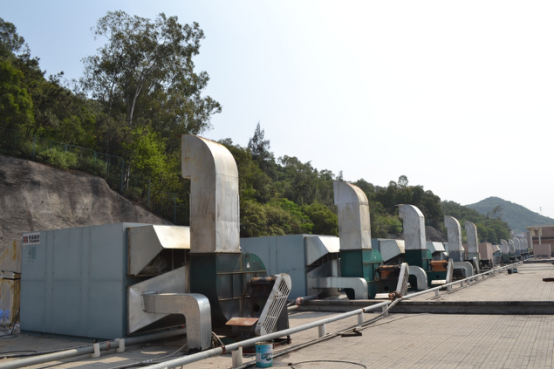1. Check before starting
Check the distribution box, magnetic separator tank, various pulp pipelines, whether the water pipeline is unblocked, no blockage, no silt, no damage, and whether the gates are flexible or not;
Check whether the bolts of the reducer, bearing cap, coupling and equipment feet are intact, loose or fall off;
Check the cylinder body, the bolts of the end caps of the cylinders are tightened, and the sealing is intact;
Whether the reducer and the bearing are lubricated, whether the oil is sufficient;
Check that the safety features such as guards and railings are in good condition;
Check the motor wiring, switch, appearance should be no abnormalities;
Check that the magnetic system is too high, the working gap, and the unloading clearance should be within the specified range;
Before starting the machine, it is necessary to carry out the human-disc drive, check whether the rotating parts are flexible, and there is no friction and other noise in the drum and reducer;
Before starting the machine, you must check and confirm that there are no obstacles around the equipment and no one is working. The upper and lower groups are in good contact, and can be turned on after receiving the driving order.
Open and stop sequence
2. Boot sequence
(1) Open the unloading water and flushing water valve (2) Connect the start button to start the magnetic separator (3) Open the mine valve to the mine
3. Shutdown sequence
(1) After the slurry of the previous operation is processed, the ore valve is closed and the ore is stopped. (2) There is no ore deposit in the tank and the unloading tank. The magnetic separator is selected (3) to close the unloading water and rush. Scattered water
Second, the inspection of equipment operation
1. Check the distribution of the ore bin, whether there is siltation or blockage of debris;
2. Check whether the ore and concentration of the ore and the distribution of the ore are uniform, and whether there is a phenomenon of backward ore pouring;
3. Check the ore size of the tailings tank and the distribution of several tailings pipes, whether there is any blockage or blackout;
4. Check whether the water pipe valves of each department are flexible, whether there is any blockage, and whether the water volume is suitable;
5. Check whether the temperature of the motor, bearing and reducer is within the specified range, and whether there is abnormal smell;
6. Check the coupling, the triangle with no wear, and whether the anchor bolts are loose;
7. Check the surface of the cylinder for wear and tear, and there is no abnormal friction in the cylinder;
8. Check whether the amount of ore under the concentrate unloading port has changed, whether it is uniform or not.
Air to Air Waste Heat Recovery Equipment
Air to Air Waste Heat Recovery Equipment
through and exchange energy(heat-recovering system and exhaust heat recovery system). It can separate fresh air and exhaust air completely, avoided
any solvent transmission. The two air cross and counter flow to the exchanger, then fresh
air and exhaust air exchange energy through the metal plate,
collisions between particles in the hot inner region transfer energy to particle
s in the cooler outer region and realize to recycle energy from exhaust air.
Specifications
Modular construction
Compact structure
Dust prevention
No heat transfer medium

Air To Air Waste Heat Recovery Equipment,Waste Heat Recovery Machine,High Efficiency Waste Heat Recovery Equipment,Waste Hot Air Recovery Machine
Dalian Transen Technology Co.,Ltd. , https://www.transen-china.com